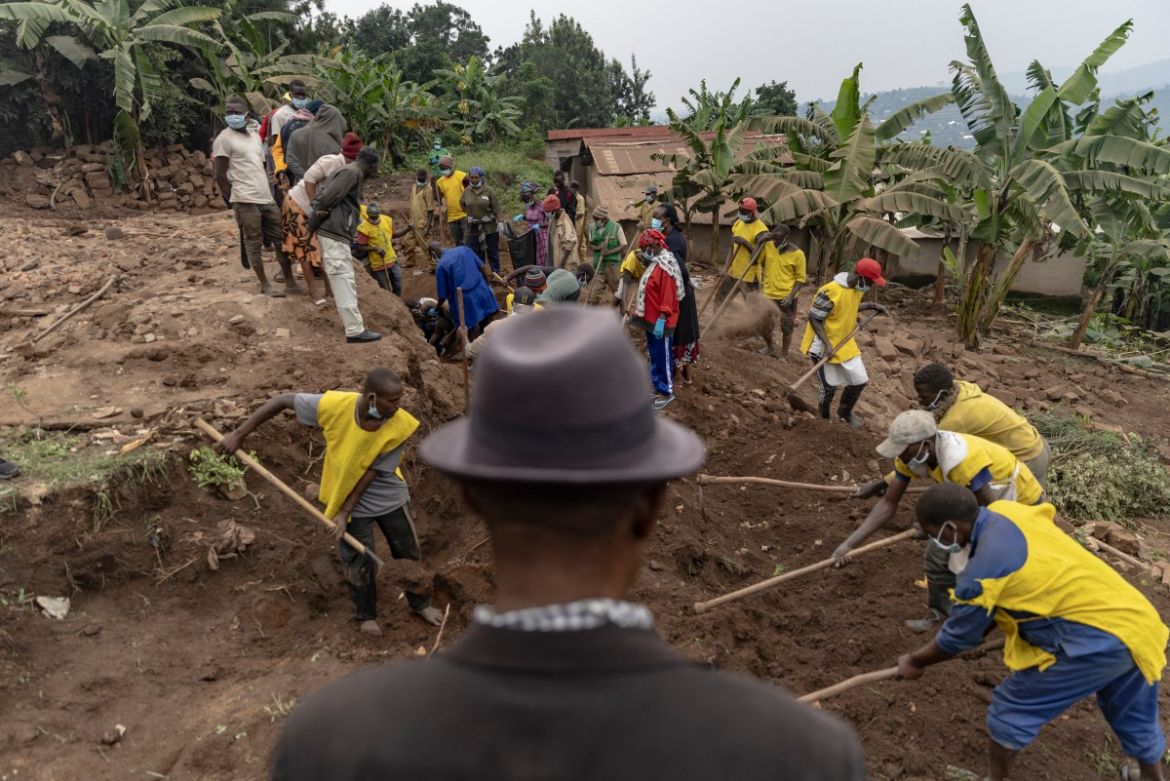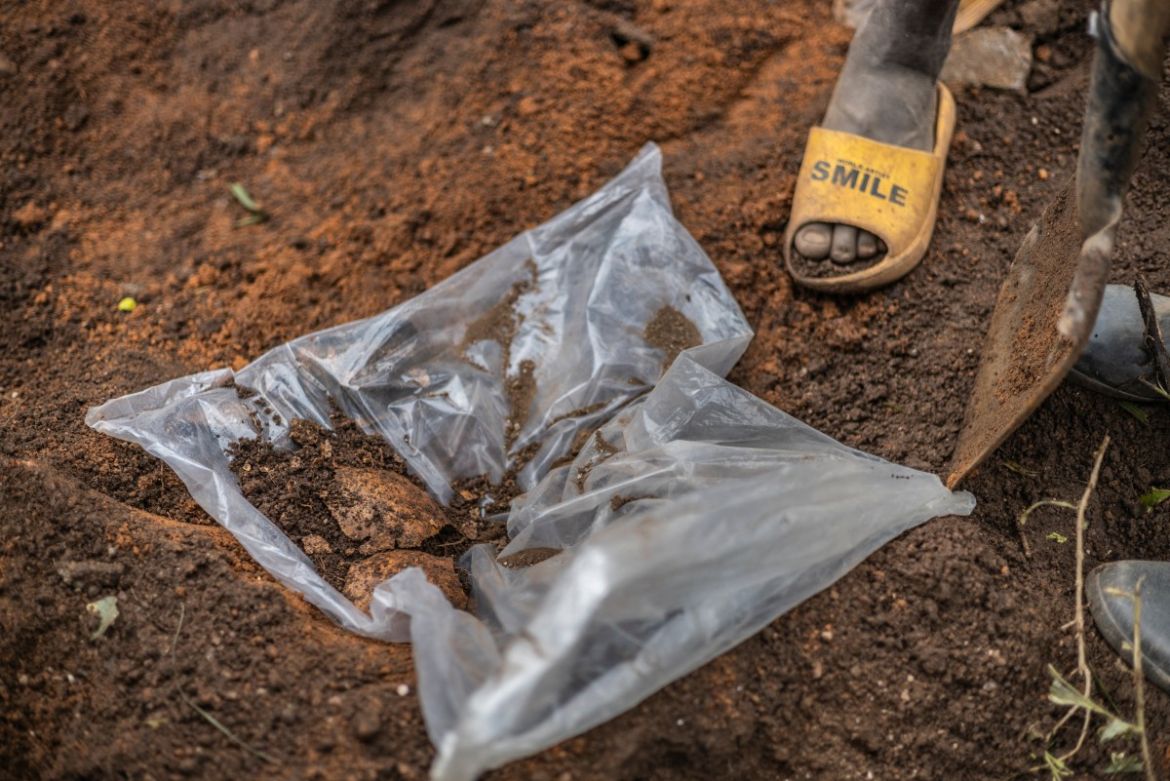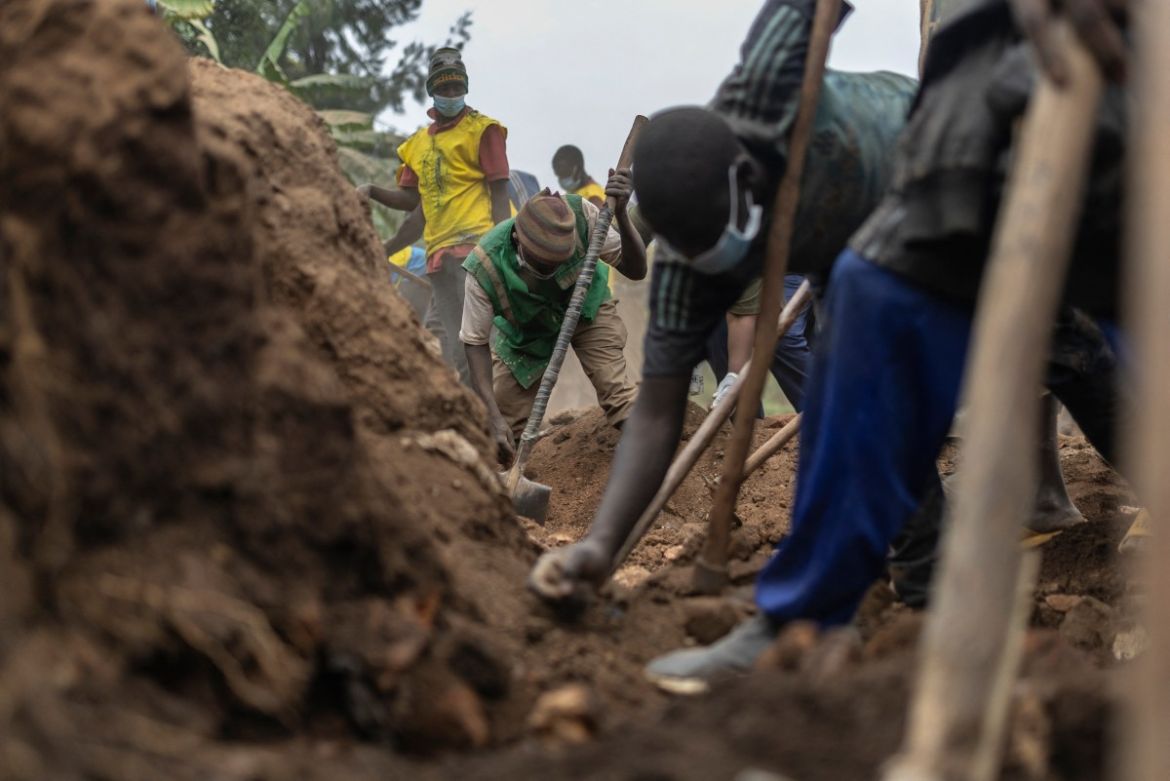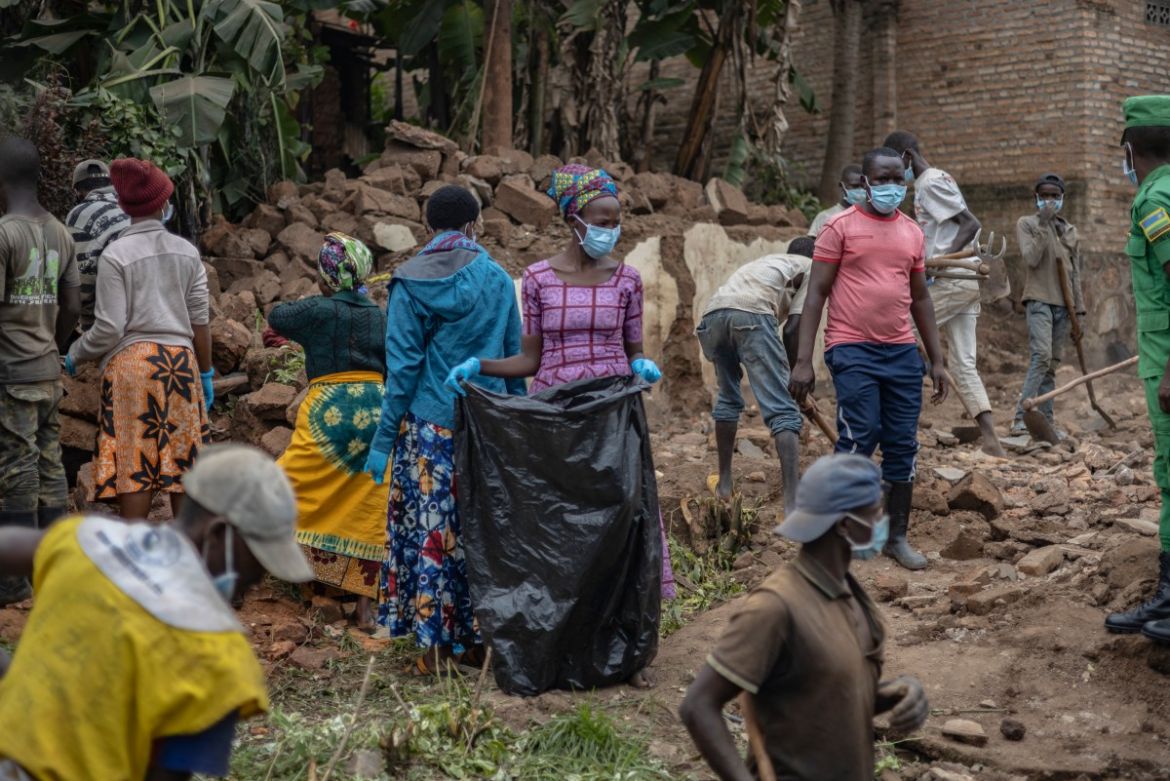With shovels and garden hoes, villagers stood this January digging where a house once stood in Rwanda to reveal a mass grave filled with bones – victims of the genocide still being found 30 years on.
Around 100 volunteers, many wearing face masks and rubber gloves turn over the red soil in Ngoma village in the country’s south, with a sombre determination as a crowd watches on from a slope above.
Skulls, teeth and other shards of bone are placed carefully into plastic bags while shoes and tattered clothing – possible clues to identify loved ones never found – are collected elsewhere.
The remains of 119 people had been unearthed over three days, said Napthali Ahishakiye, president of the genocide survivors’ group Ibuka.
Andre Kamana, deputy mayor of the wider Huye district in the country’s south, said there was no telling how many more might be found.
“Every time they dig deeper, they find more layers of soil with remains,” he said grimly.
Discoveries of mass graves are remarkably frequent even three decades after the 1994 slaughter instigated by the Hutu extremist regime in Rwanda at the time.
The United Nations estimates that around 800,000 people, mostly from the Tutsi minority, were killed over 100 days in an ethnic pogrom that turned neighbours against each other in the tiny East African nation.

‘Family secret’
In Ngoma, a three-hour drive from the capital Kigali, roadblocks were erected and Tutsis dragged from their cars and murdered, said Goreth Uwonkunda, a 52-year-old who has lived her entire life in the village.
“The history here is terrible… this is clearly one of the mass graves where they were dumped,” she told AFP.
“The killers buried victims on top of others. We found big bones, some intact, even whole skulls.”
The mass grave was discovered beneath a family home. Five of the family members have been arrested on suspicion of complicity in genocide and concealment of evidence.
The investigation began last October when a whistleblower tipped off the authorities about the likelihood of a mass grave on the unremarkable rural property on a hillside off a main road.
“It is suspected that those who lived in that house knew what was underneath them, and it was a family secret,” Ibuka’s Ahishakiye said.
The appalling discovery has horrified those living near the graves all these years.
“I knew the people who lived in this house, and I am quite shocked that they comfortably slept on top of bodies every night and were alright with it. It is shameful and shocking,” said Uwonkunda.

‘Decent burial’
But such graves are still being found across the country with grim regularity, underscoring the sheer scale of the slaughter between April and July 1994.
Last April, in the western district of Rusizi, 1,100 bodies were discovered in mass graves located on a plantation belonging to a Catholic parish.
Three years earlier, in April 2020, a pit believed to contain as many as 30,000 bodies was exhumed near a dam in the east of the country.
Six months later, 5,000 bodies were discovered in Gatsibo district.
Ibuka says the remains of more than 100,000 genocide victims have been unearthed across Rwanda in the past five years alone.
“We suspect that similar mass graves remain undiscovered across the country, because there are survivors looking for their loved ones, 30 years after the genocide,” said Ahishakiye.
“The biggest challenge is that vital information about the location of these mass graves is held by people who took part in the killings, or relatives of the killers, and are adamant against revealing such information.”
One still searching for answers is Celestin Kambanda, a 70-year-old farmer who has found none of the seven children he lost in the genocide.
In Ngoma, he keeps vigil and waits for any sign among the scraps of cloth and bone being prised from the mud.
“I came here to see if I could recognise any of my children, maybe from the clothing they wore when they disappeared,” he told AFP. “I would hope to give them a decent burial one day.”












